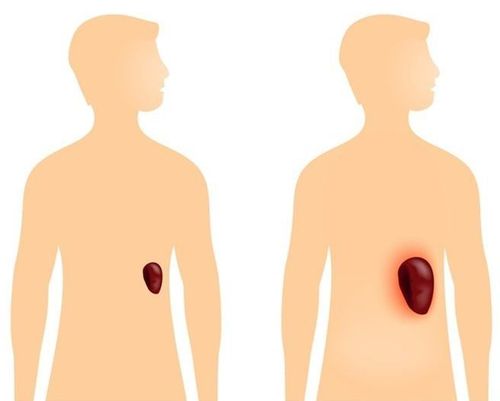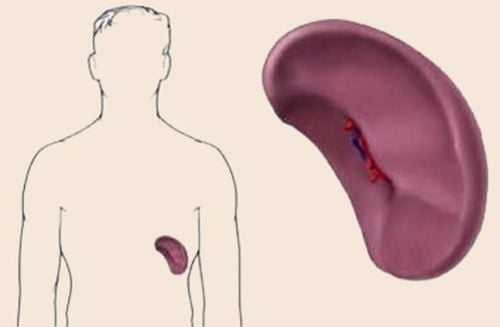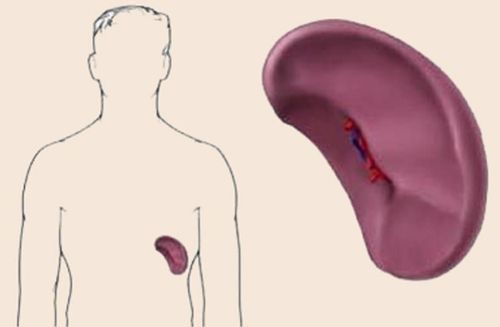This is an automatically translated article.
The article was consulted professionally with Master, Doctor Nguyen Thai Binh - Gastroenterologist - General Surgery Department - Vinmec Ha Long International General Hospital.The spleen, located just below the left rib, helps the body fight infections and filters old blood cells in the blood. Despite being surrounded by a hard shell and located quite deep in the abdomen, the rate of traumatic spleen rupture ranks first in abdominal trauma caused by sports accidents, punches to the abdomen or traffic accidents. are the most common causes.
1. What causes spleen rupture?
The spleen can rupture when the abdomen is subjected to a direct blow or blunt trauma. The spleen is the most vulnerable organ in abdominal contusion injuries of all ages.
The following are some of the most common causes of splenic rupture:
Traffic accidents Injuries in contact sports such as football and hockey Bicycle accidents, such as falling with your stomach on the handlebars of your car. bicycle Domestic violence Some diseases can also lead to spleen rupture. In these cases, the spleen swells and the capsule-like sheath that coats the spleen becomes thinner leaving the organ vulnerable to injury, and even moderate direct force can lead to damage. to spleen rupture. Diseases that increase the risk of splenic rupture include:
Infectious mononucleosis; In some cases, a ruptured spleen is the first sign of the disease Blood diseases such as Hemolytic anemia and certain types of lymphoma Malaria
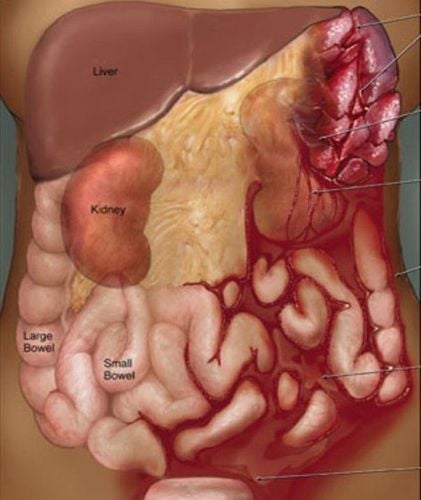
2. What are the symptoms of a ruptured spleen?
A ruptured spleen causes severe symptoms such as abdominal pain, but not every patient is the same. The severity and even the location of the pain depends on the extent of the rupture of the spleen and the degree of intra-abdominal bleeding. The patient may feel pain in the following places:
Left side of the abdomen below the ribcage Left shoulder, because the nerves in the left shoulder and on the left side of the diaphragm originate from the same place and rupture of the spleen can irritate These nerves Internal bleeding from a ruptured spleen can cause a drop in blood pressure with the following symptoms:
Blurred vision Confusion Confusion Dizziness Fainting Signs of shock from blood loss include restlessness, anxiety, nausea and blue lol
3. What does the doctor do to diagnose a ruptured spleen?
In emergency cases, with experienced doctors, it is only necessary to examine without testing to diagnose a ruptured spleen. Your doctor will ask about your medical history and pain symptoms. The doctor examining the abdomen may feel hard and tight because it's filled with blood. If a lot of blood has been lost due to a ruptured spleen, the patient may have low blood pressure and a rapid heart rate. Sudden low blood pressure in a person suspected of having a spleen injury, especially a young person, is an indication of a serious condition that requires urgent surgery.
Tests used to diagnose splenic rupture include:
Computed tomography (CT) of the abdomen is one of the most commonly used methods. During the scan, your doctor will inject contrast material into a vein in your arm to help your doctor determine how much blood is draining from your spleen. Bleeding from the spleen may not be detected on a CT scan of the abdomen without contrast.
However, the limitation of abdominal CT scan can only be done if the patient is not in critical condition because Contrast CT can take a while and the patient may die while waiting for the procedure. perform the test.
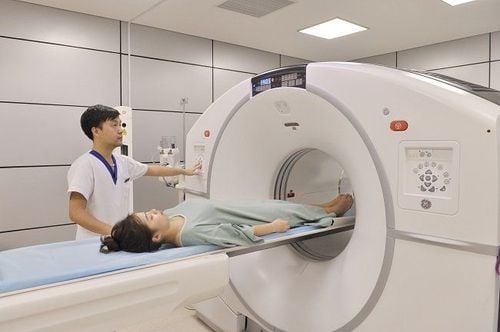
For this reason, CT scanning is not recommended for people with splenic rupture who have unstable vital signs or traumatic low blood pressure (which often suggests signs of shock). Or patients with a condition that is allergic to contrast or kidney problems should not use contrast.
In these cases, other tests may be used to help diagnose splenic rupture, including:
Focused abdominal sonographic technique. This is an ultrasound method to check for fluid accumulation in the abdomen and should be used to help diagnose splenic rupture in patients with unstable vital signs. Diagnostic peritoneal lavage (Diagnostic peritoneal lavage). This is a quick way to determine if blood is concentrated in the abdomen. It is a quick, low-cost method and can be performed on patients with splenic rupture who have symptoms of low blood pressure. Abdominal MRI. This may be an option for patients with stable vital signs but with renal failure or a severe allergy to the contrast medium used in the CT scan. If the patient is stable and does not require emergency surgery, additional tests such as a complete blood count (CBC) or hemoglobin level will be performed regularly to detect signs of blood loss.
4. How do doctors treat ruptured spleen?
In the past, the treatment for splenic injury was usually to remove the entire spleen. However, doctors now say that some spleen injuries can heal on their own, especially those that aren't too severe. However, people with a spleen injury that don't require surgery still have to be monitored in the hospital and may need a blood transfusion.
Urgent surgery to remove or repair the spleen is done in the following cases:
If the doctor suspects heavy bleeding in the abdomen If the person with suspected splenic rupture has low blood pressure or vital signs Unstable survival When surgery is complete, most of the entire spleen is usually removed. But in the case of a small tear, the doctor will try to save the spleen by suturing the tear and putting pressure on the spleen or a blood vessel until a blood clot forms to stop the machine from flowing or perform a node technique. vessels to save the spleen.
The degree of recovery depends on the severity of the rupture. Overall, the best outcomes are seen in people with milder splenic rupture (grade I and II injury). The risk of complications is more common in people over 55 years of age. Death from splenic rupture can occur even when patients are treated at top surgical hospitals.
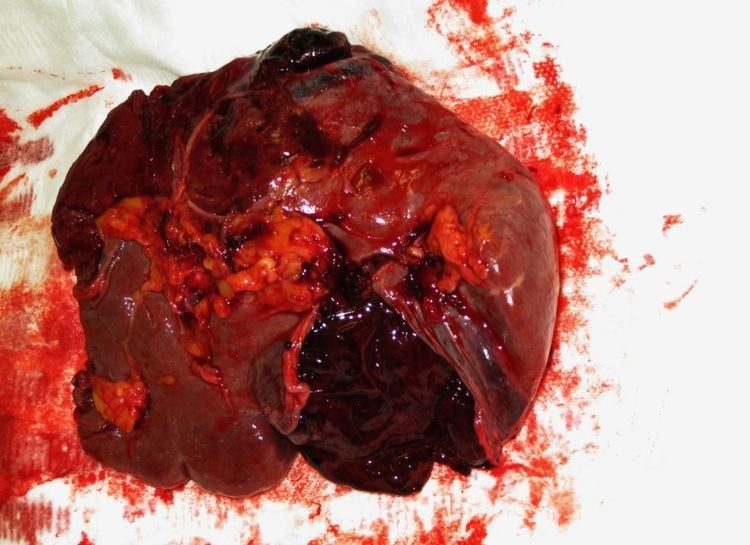
Patients can live without a spleen. However, because the spleen plays an important role in the ability to fight certain bacteria, living without this organ puts a person at high risk for life-threatening infections. Therefore, patients should receive pneumococcal vaccine, meningococcal vaccine, and Hib vaccine. These vaccines are usually given 14 days before splenectomy or 14 days after surgery.
Children who have had their spleen removed will probably need daily antibiotics to prevent infection, but adults usually don't need antibiotics, unless they are sick or have a high chance of getting sick.
When a patient has symptoms of spleen rupture, immediate emergency examination is required to avoid life-threatening danger. Vinmec International General Hospital has good experts and the most modern equipment. Please contact us for the most timely advice, examination and treatment to avoid affecting your health.
Please dial HOTLINE for more information or register for an appointment HERE. Download MyVinmec app to make appointments faster and to manage your bookings easily.
Article reference source: webmd.com, mayoclinic.org





